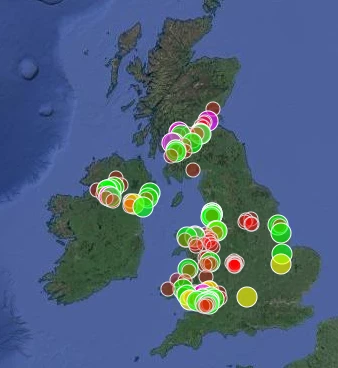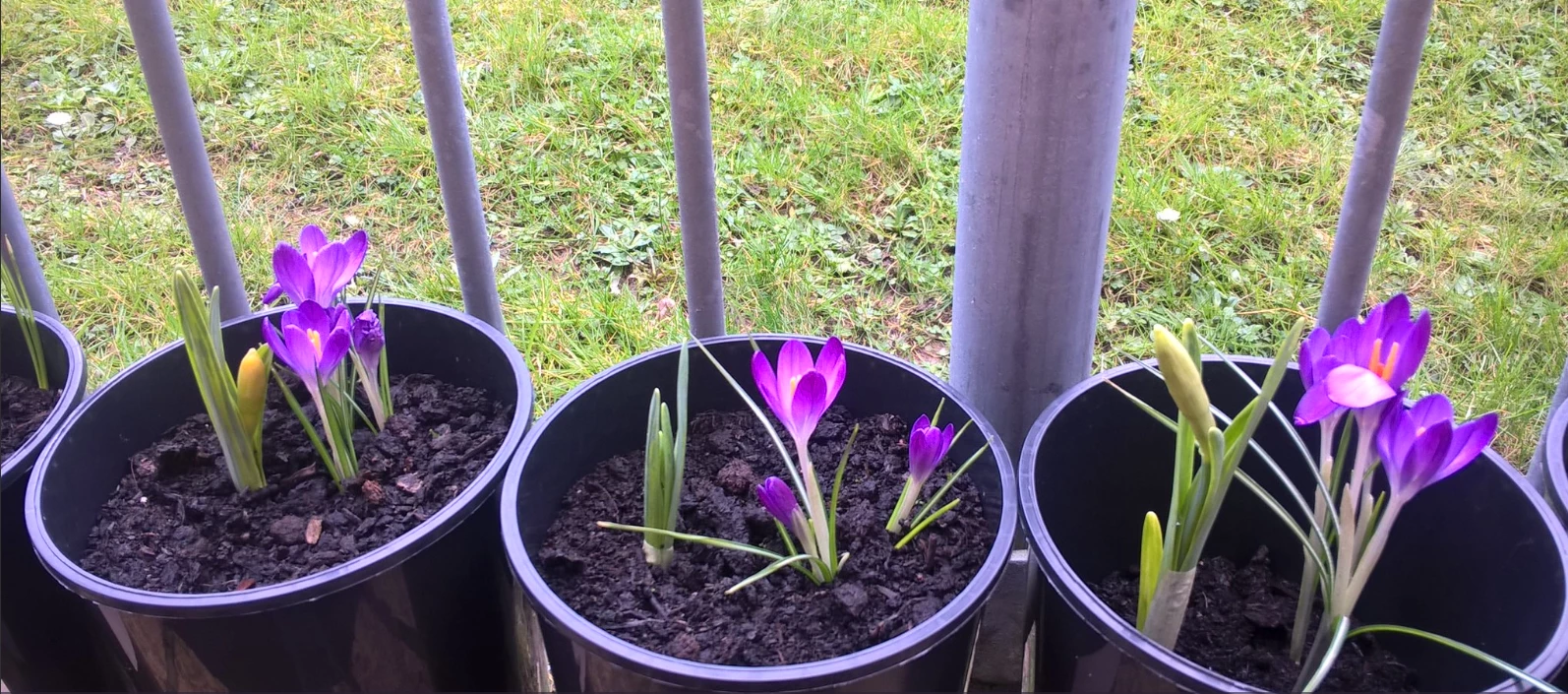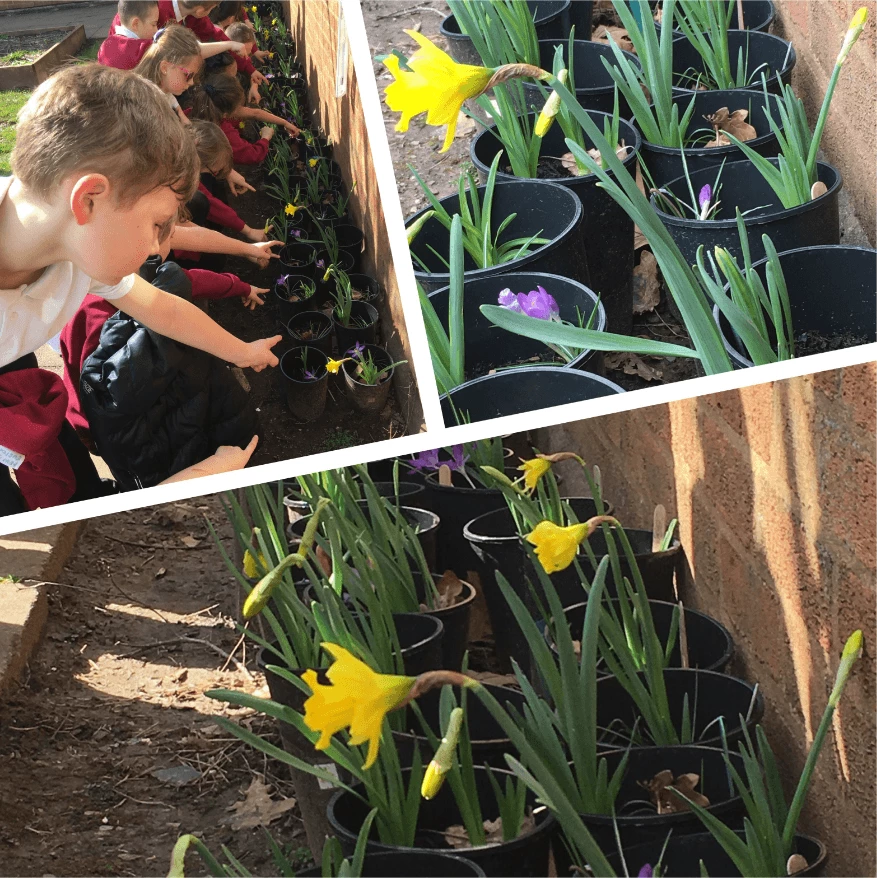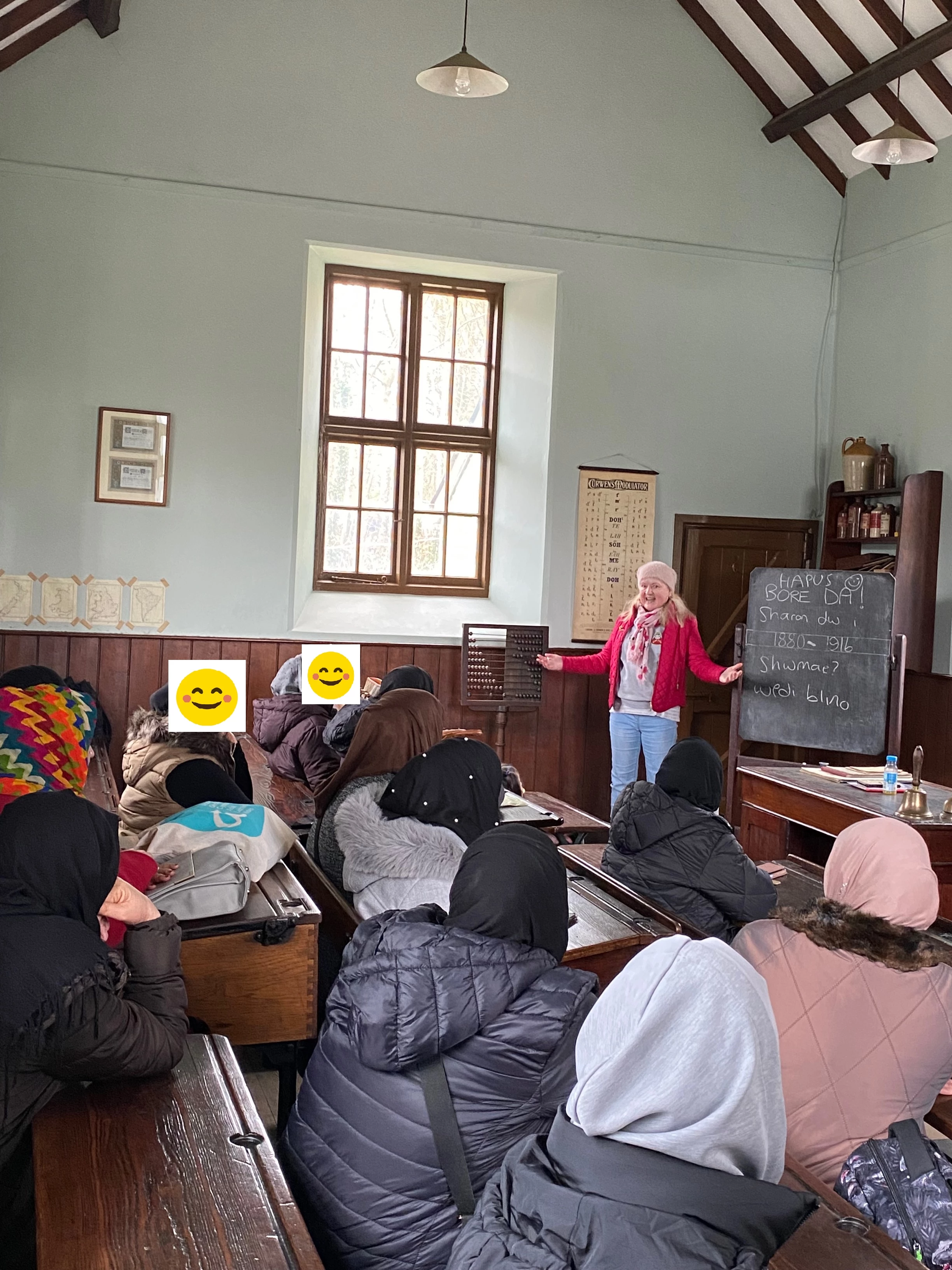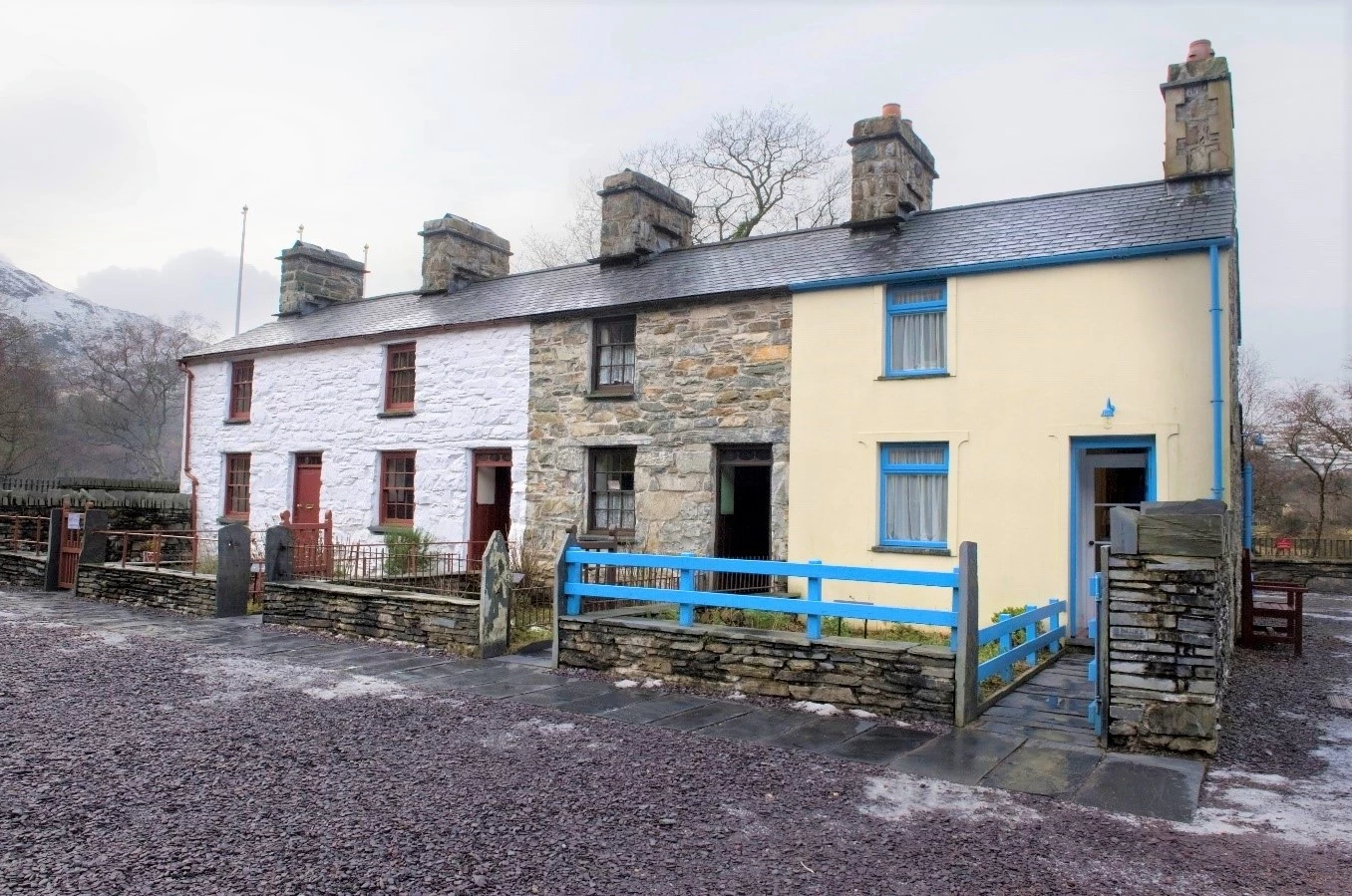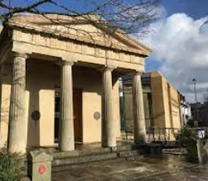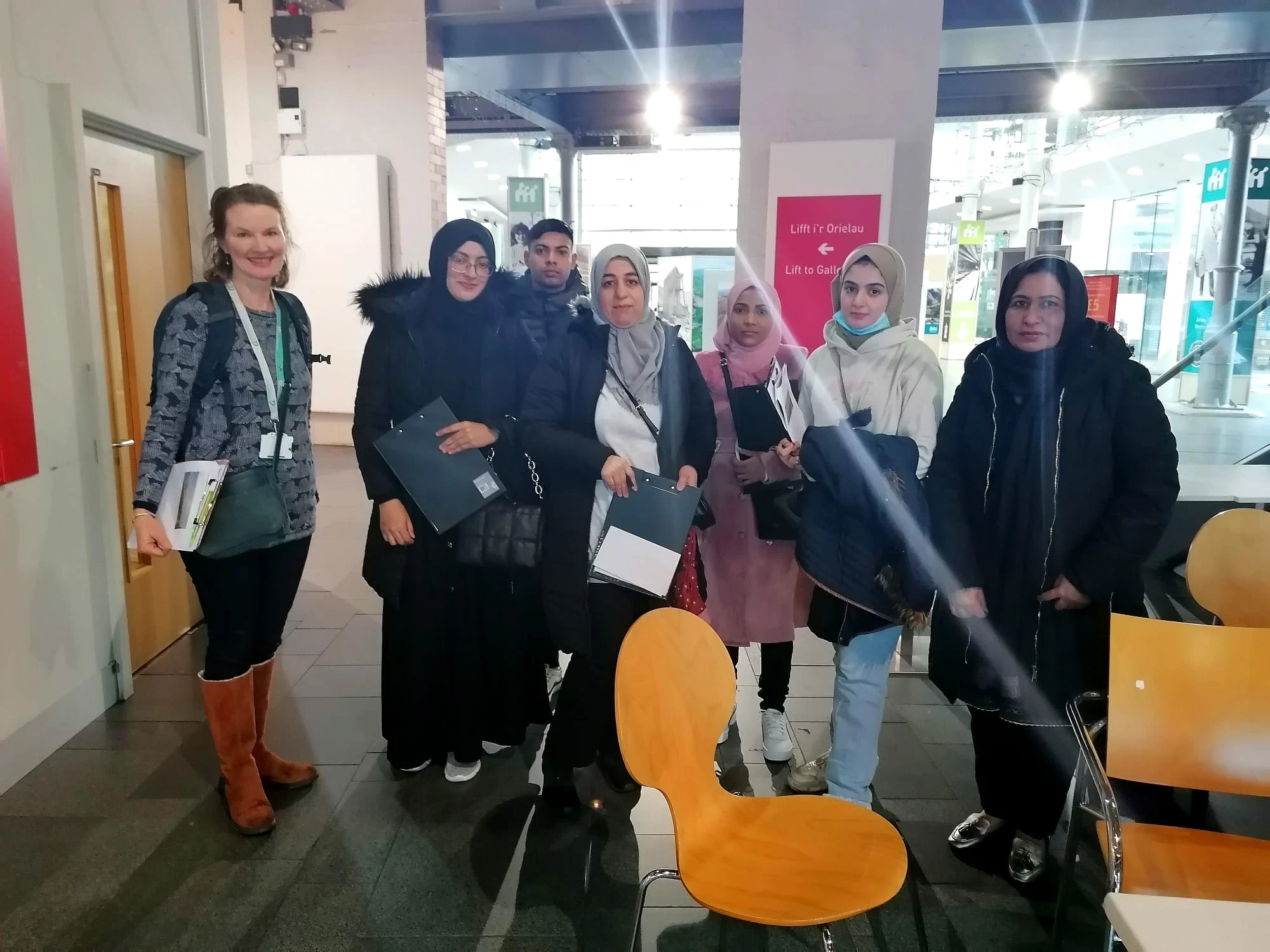Y Ddôl Drefol yn Amgueddfa Genedlaethol Caerdydd
, 1 Gorffennaf 2023
Eleni, ar 1 Gorffennaf nid dim ond dathlu Diwrnod Cenedlaethol y Ddôl y byddwn ni, ond hefyd byddwn yn dathlu deng mlynedd ers sefydlu ein Dôl Drefol yn Amgueddfa Genedlaethol Caerdydd. Rydym yn nodi’r diwrnod gyda digwyddiad Dathlu Natur yn Amgueddfa Werin Cymru, Sain Ffagan.
Yn sgil y cyllid cychwynnol gan Gronfa Gymunedol Cemex, mae’r ddôl wedi gallu newid o fod yn ardal o “laswelltir amwynder sy’n brin o rywogaethau” (Arolwg Bioamrywiaeth, AC-MW, 2009) i fod yn ddôl drefol gyda dros 56 o rywogaethau o blanhigion wedi’u cofnodi yn yr arolwg diwethaf (Arolwg Bioamrywiaeth, AC-MW, 2021).
Ar y Ddôl Drefol bob haf, bydd planhigion fel Pysen y Ceirw (Lotus corniculatus), Llygad Llo Mawr (Leucanthemum vulgare), Briwydden Felen (Galium verum) a’r Feillionen Goch (Trifolium pratense) yn ychwanegu lliw i’r rhan hon o’r ddinas. Yn ystod y deng mlynedd mae hwyaid gwyllt wedi bod yno yn cysgodi, ac mae neidr wair wedi cael ei gweld yno hefyd. Bydd Tegeirian y Gwenyn (Ophrys apifera) yn blodeuo ddiwedd Mai/dechrau Mehefin bob blwyddyn hefyd i ychwanegu elfen egsotig i’r ddôl. Pan ddaw Gorffennaf, mae’r ddôl yn fwrlwm o bryfed ac adar sy’n chwilio am hadau a phryfed i’w bwyta. Mae gwenyn mêl (Apis mellifera) yn byw gerllaw mewn cychod gwenyn ar do’r Amgueddfa. Mewn byr o dro mae modd iddyn nhw gasglu neithdar a phaill o’r Ddôl Drefol yn ystod misoedd yr haf.
Yn ystod cyfnodau clo Covid 19, chafodd y ddôl fawr o sylw gan ymwelwyr na chwaith gan staff a gwirfoddolwyr yn helpu i’w chynnal. Felly, mae rhai o’r rhywogaethau o laswellt wedi gormesu’r planhigion eraill. All blodau bach ddim cystadlu â glaswelltau cryf. Er mai glaswellt cynhenid yw Cynffonwellt y Maes (Alopecurus pratensis), Troed y Ceiliog/Byswellt (Dactylis glomerata) a Rhonwellt (Phleum pratense), nid peth da yw cael gormod ar y ddôl. Mae un gornel o’r ddôl yn fwy llaith na’r tair cornel arall ac mae’r ardal yn gyforiog o Faswellt penwyn (Holcus lanatus). Nid yw hwn yn un o’r rhywogaethau glaswellt talach (fel rheol dim ond hyd at fetr o uchder y bydd Maswellt penwyn yn cyrraedd}, ond gall y rhywogaethau glaswellt eraill fod mor dal â 150cm.
Bydd glaswelltau fel arfer yn cael eu peillio gan y gwynt, felly nid oes angen blodau lliwgar i ddenu pryfed i’w peillio. Er mwyn gadael i’r planhigion blodeuol gael rhywfaint o le i dyfu, rydyn ni am hau hadau Cribell Felen (Rhinanthus leiaf) yr hydref hwn. Mae’r planhigyn blynyddol hwn yn barasit ar Laswellt (Poeaceae) sy’n golygu ei fod yn cael maetholion wrth dreiddio trwy wreiddiau’r glaswellt. Efallai y bydd angen hadau Cribell Felen ar lawer o ddolydd yr hydref hwn oherwydd bod y glaswellt wedi ymdopi’n well â’r tywydd poeth na’r planhigion llai sy’n llachar eu lliw. Mae’r hadau’n cael eu hau yn yr hydref oherwydd bod angen iddyn nhw aros yn y pridd drwy’r gaeaf a phrofi’r oerfel er mwyn egino. Mae’r blodau melyn yn ymddangos yn y gwanwyn, ac yna daw y codennau hadau swnllyd.
Mae’r Ddôl Drefol wedi bod yn gyfle da i gynyddu bioamrywiaeth ym Mharc Cathays trwy wneud cynefin braf i blanhigion ac anifeiliaid, ond mae wedi bod o gymorth i bobl hefyd. Mae staff a gwirfoddolwyr ynghyd ag ysgolion a grwpiau cymunedol wedi ymweld â’r ddôl i ddysgu am gynefin y ddinas hon. Maen nhw wedi ein helpu ni i hau hadau a phlannu planhigion bach, lladd gwair a thacluso’n gyffredinol. Fe wnaeth un grŵp ddarganfod pedol hyd yn oed! Lwcus i’r person ddaeth o hyd iddi, ond nid i’r ceffyl a’i collodd efallai!



